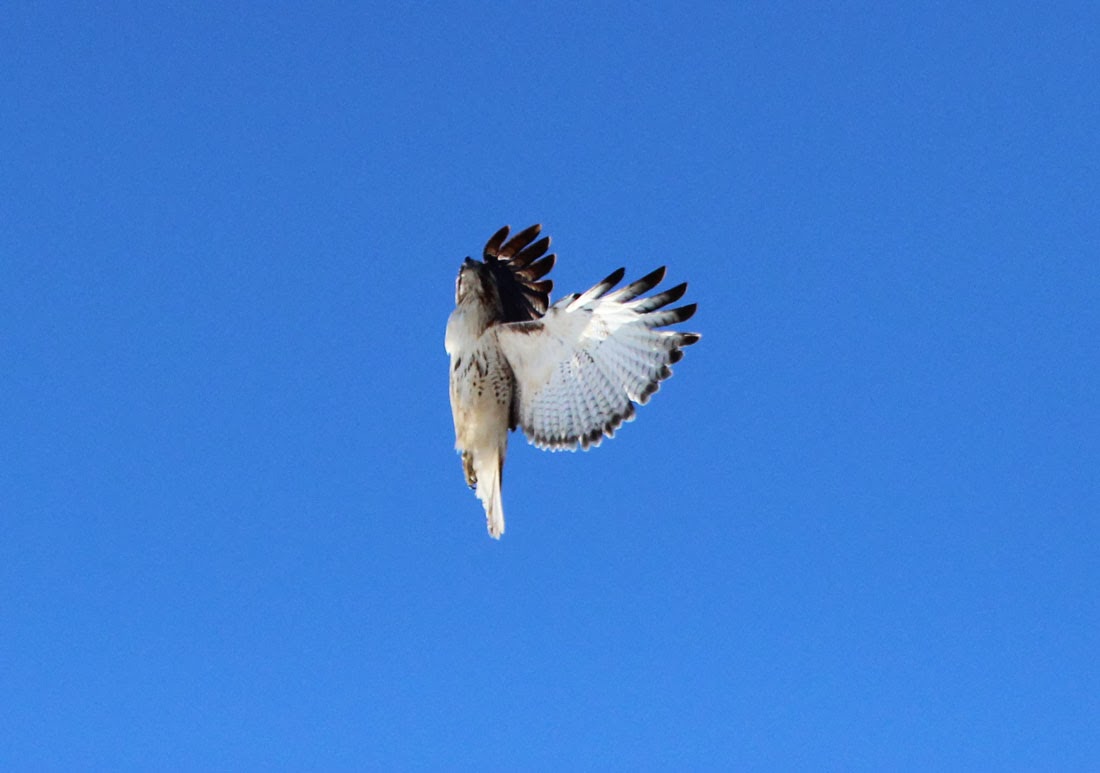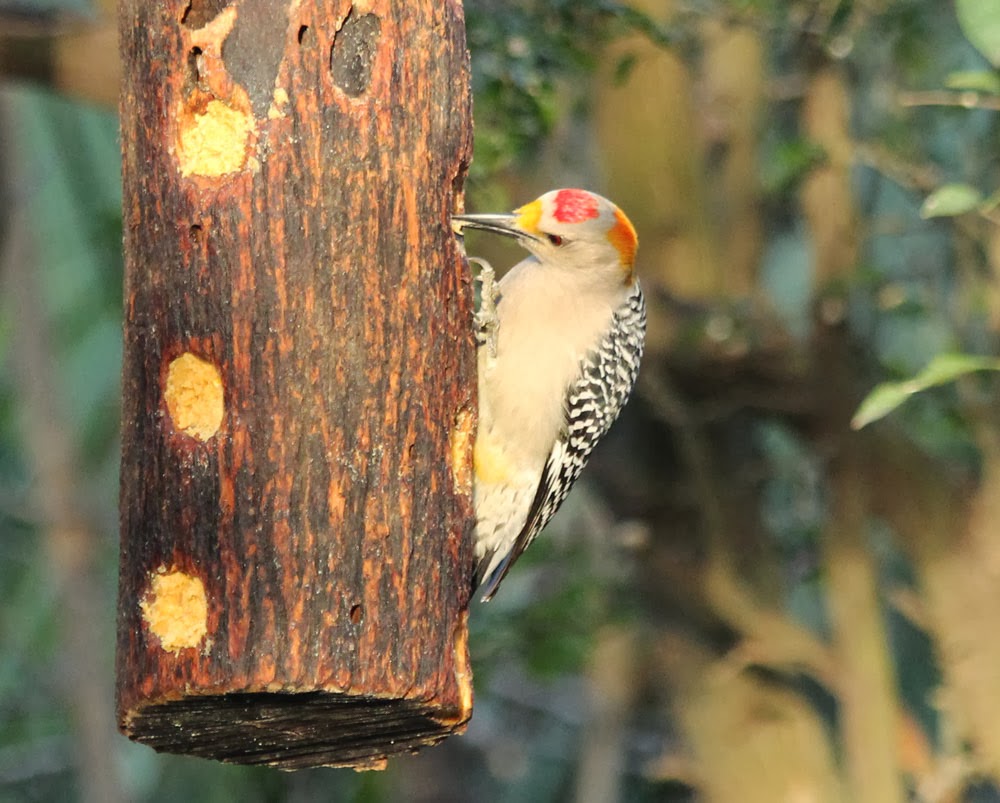Update March 27th, 2014. Essential recent references on Greater White-fronted Goose taxonomy and distribution include this paper from Dr. R.C. Banks published by the Biological Society of Washington in 2011;
and this blog entry from David Sibley last edited in October 2011;
In addition I received a beautifully concise reply from David Irons on March 1st, 2014 after posting the images on the ID Frontiers Listserve. David's complete reply appears here with permission - thanks David!
"James,
Aside
from being a slightly darker than normal on the neck and breast, this
bird is consistent with the first-winter Greater White-fronted Geese
that I see along the Pacific Flyway (mostly western Oregon and the
Klamath Basin). This population seems to show quite a bit of variation
between the darkest to lightest birds, which may be sub-population
variation within A. a. sponsa. Tule White-fronteds are noticeably
larger, longer-necked, and more uniformly dark on the head and neck
than the bulk of the Pacific Flyway birds. Given that you felt your bird
looked small and from what I can see of the head and neck coloration, I
think that Tule Goose is safely eliminated. Migrant birds in
Oregon (away from the Klamath Basin) and Washington that are darker in
the face are occasionally reported as Tule Greater White-fronteds, but I
have my doubts about most of these reports. As it is, only a small
fraction of the Pacific population ever stops anywhere in these states
(away from the Klamath Basin). Given that A. a. elgasi represent
such a small fraction of all the birds along this flyway, I would expect
this form to be quite rare in western Oregon and western Washington.
I've looked at a lot of G. White-fronteds in w. Oregon and never seen a
bird that I would call a Tule.
According to the map in Sibley's 2011 blog post on this topic (link below), the Bristol Bay population of A. a. sponsa
passes through/over AZ on its way to and from wintering grounds in c.
Mexico. Thus, the Bristol Bay population would seem to be the most
expected source of your AZ bird.
Most
of the Pacific Flyway birds overfly western Oregon during northbound
and southbound migrations. They fly very high, coming north through the
Klamath Basin, angling across the Cascades in sw. Oregon, crossing the
Willamette Valley and then the Coast Range before heading out over the
open ocean along the northern Oregon coast. I would put this migration
path about halfway between the broad green line ("Western Alaska"
population) and the narrow green line ("Bristol Bay" population) on
Sibley's map. Single-day counts of 5000-7000 birds (high overhead) have
been recorded in the southern and central Willamette Valley on many
occasions. The migration windows for northbound birds usually falls 20
April–10 May and the window for southbound birds normally falls 20
Sep–10 Oct, with a decided spike during the last week of September. The
number of birds passing during these windows far exceeds the total
population of A. a. elgasi, which,
according to Sibley's map, most closely follows the path I describe
above. If you were to slide the #2 broad green line over just to the
right of the #4 teal (A. a. elgasi)
line–so that it would connect to the blue area indicating the Klamath
Basin–the migratory route over w. Oregon would be perfectly
illustrated.
Dave Irons
Portland, OR"
Greater White-fronted Goose - first-winter, St. David RV Resort, Cochise Co., AZ. January 19th, 2014.
These additional images appear courtesy of Robert Davidson taken on January 19th, 2014 and posted here on March 3rd, 2014.
Our British group came across this
Greater White-fronted Goose evidently wintering on a small, tree fringed pond at St.David RV resort, not too far south from Benson, Arizona. The pond hosted both domestic and wild watefowl and the white-front showed no obvious signs of ever being held in captivity. Moreover, the absence of black barring clearly pointed to this bird being in its first-winter though (even by mid-January) it was already showing a nice, broad 'white front' above the bill. Three things stood out;
1) It gave the impression of being small, stocky and dark. The one comparative shot that I've included shows it being slightly larger than a female Mallard which would be in keeping with how it appeared in the field. Unfortunately, no other 'wild' geese were present for a better size comparison. However, the bird was so small that it initially prompted comparisons with Lesser White-fronted Goose among my British companions.
2) The overall cast of the bird was very dark brown, darker than the birds I've encountered in New England which are thought to be, at least in most cases, the
Greenland form
flavirostris.
3) The bill color was neither pink or orange, but rather something in between the two being largely weak pinkish but blending into weak orange towards the base of the maxilla.
Greater White-fronted Goose - first-winter, sub-species uncertain, St. David RV Resort, Cochise Co., AZ. January 19th, 2014.
Is it possible to assign this lone bird to a distinct group or sub-species?



-Greater-White-fronted-Goose.jpg)
-Greater-White-fronted-Goose.jpg)













































